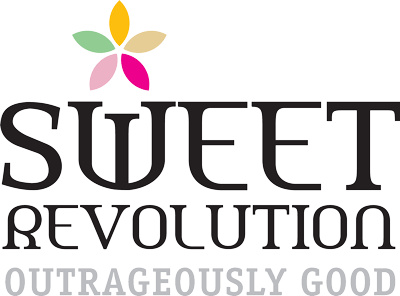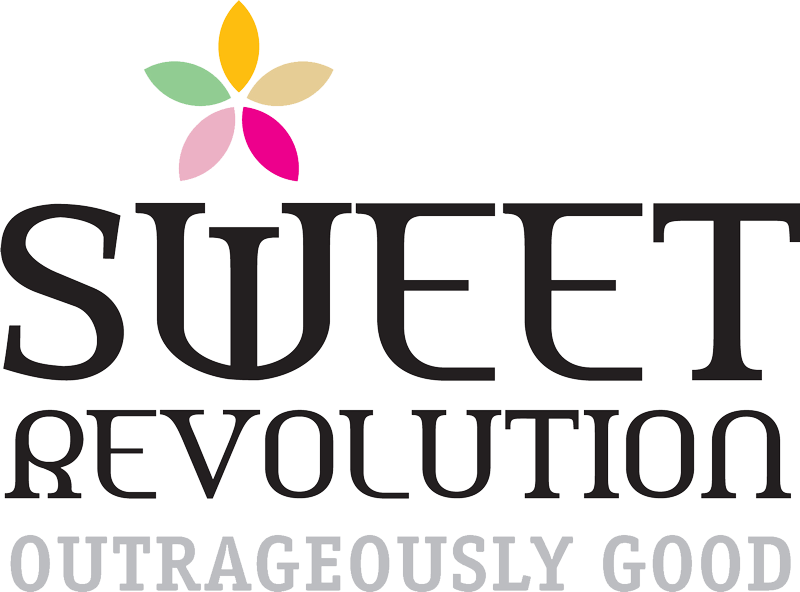SO WHY DID WE DECIDE TO GO ORGANIC?
As a company, we’ve always been conscious about our ingredients and products, and passionate about creating delicious drinks whilst minimising the impact on our planet.
Recently, topics such as sustainability and organic have gained traction, especially following on from Climate Protests and the media attention that Greta Thunberg and Extinction Rebellion have had.
As we are facing a climate emergency, this is a pivotal moment which can define our future. It’s important to be making the right choices for ourselves and the planet. One of the many environmental-focused choices we have made since starting our business is to certify all our products Organic.
What is Organic?
“Organic Agriculture is a production system that sustains the health of soils, ecosystems and people. It relies on ecological processes, biodiversity and cycles adapted to local conditions, rather than the use of inputs with adverse effects. Organic Agriculture combines tradition, innovation and science to benefit the shared environment and promote fair relationships and a good quality of life for all involved.”
Definition of Organic Agriculture, IFOAM – Organics International
We’re extremely proud to say that all our products are certified Organic as it focuses on a whole-system approach and is based on four key principles:
- Health
- Sustaining and enhancing the health of soil, plant, animal, human and planet.
- Ecology
- Centring around living ecological systems and cycles, working with them, emulating them and help in sustaining them.
- Care
- Managing agriculture in a precautionary and responsible manner to protect the health and well-being of current and future generations, and the environment.
- Fairness
- Nurturing relationships that are built on fairness with regards to the environment and life opportunities.
Organic Certification is an ongoing process and the standards are laid down in law. This means that, as a business, we need this certification to process and market all our ingredients and products, and we are inspected every year to make sure we are complying. Only then can we proudly use the Soil Association’s Organic sticker on our packaging.
Better for the Planet
Greenhouse gases are one of the main causes of Climate Change. Organic agriculture plays its part in lowering the risk of environmental pollution and helping to reduce greenhouse gas emissions by severely restricting the use of manufactured chemical fertilisers and pesticides1. If all Europe’s farmland followed Organic principles, agricultural emissions could drop by 40-50% by 2050, with plenty to feed the growing population healthy diets2 3.
As well as producing less greenhouse gases, Organic farmland stores more carbon – on average 3.5 tonnes extra for every hectare (the size of nearly two football pitches!)4. This is the greenhouse gas equivalent of driving your car around the world almost one and a half times5.
Better for Soil
Soils are home to a quarter of the Earth’s species6. Just a quarter of a teaspoon of soil may harbour up to 10 billion micro-organisms!7 8. Globally we lose around 30 football pitches of fertile soil a minute9 and as it takes 100 years for just 1-2cm of topsoil to form, soil that is lost to pollution or erosion will need hundreds or even thousands of years to recover on its own10.
Organic farming is better for the long-term health of the soil11 and Organic farms show a more diverse range of microbes living in the soil which helps the crops to grow without artificial fertilisers12 13. They also use around 65% more manure and compost – this nourishes the soil and keeps it alive14.
Better for Wildlife
Did you know that 41% of Britain’s wildlife species have declined since 1970 and more than one in ten are currently facing extinction? Unfortunately, intensive farming practices have been identified as the primary drivers of these declines15. Over 40% of insect species are declining and a third are endangered16. Organic farms are havens for wildlife and provide homes for bees, birds and butterflies. On average, plant, insect, and bird life is 50% more abundant on organic farms17.
Aquatic wildlife is also suffering – fertilisers used in farming can create ‘ocean dead zones’ which deprive life below water of vital oxygen18. Organic farming lowers the risk of pollution in rivers and waterways19 20 21 22 23 as it doesn’t use these manufactured nitrogen fertilisers24.
Better for You
Organic standards ban the use of GM ingredients, hydrogenated fats, controversial artificial food colours, and preservatives including sodium benzoate, aspartame, and food colouring tartrazine25. So, you know by buying Organic, you have more control over not only what you don’t put in your body, but what you do!
Our full range of products is certified organic by the Soil Association. We’re very proud to include their logo on our packaging as visible confirmation that all the ingredients we source are grown in nutrient-rich soils and are ethically produced to organic standards
For more information on our Organic products, check out the full range at ww.sweetrevolution.co.uk
- Reganold and Wachter (2016). Organic Agriculture in the Twenty First Century. Nature Plants, 2, 15221
- Poux, X., Aubert, P.-M. (2018). An agroecological Europe in 2050: multifunctional agriculture for healthy eating. Findings from the Ten Years For Agroecology (TYFA) modelling exercise, Iddri-AScA, Study N°09/18, Paris, France, 74 p
- Poux, X., Aubert, P.-M. (2019) Agroecology and carbon neutrality in Europe by 2050: what are the issues? IDDRI, Issue brief N.05/19
- Gattinger, A., Muller, A., Haeni, M., Skinner, C., Fliessbach, A., Buchmann, N., Niggli, U. (2012). Enhanced top soil carbon stocks under organic farming. Proceedings of the National Academy of Sciences of the United States of America, 109(44), 18226–31. https://doi.org/10.1073/pnas.1209429109 Comparison calculated using ‘The Measure of Things’ tool available here.
- 3.5 tonnes of carbon is equivalent to 31,844 miles in an average passenger car according to the EPA’s equivalency calculator. Earth’s circumference is 24,901 miles, driving around it one and a half times would be 37,351 miles
- Natural England, 2015, Summary of Evidence: Soils
- Torsvik and Øvreås 2012, Microbial diversity and function in soil: from genes to ecosystems, Current Opinion in Microbiology, 5:240–245. Available here
- Roselló-Mora R, Amann R: The species concept for prokaryotes. FEMS Microbiol Rev 2001, 25:39-67.
- Lori et al. (2017) Organic farming enhances soil microbial abundance and activity. A meta-analysis and metaregression. PLoS ONE 12(7):e0180442
- Jones, A., et al. (2012) ‘The State of Soil in Europe’ A contribution of the JRC to the European Environment Agency’s Environment State and Outlook Report – SOER 2010, available online at: http://eusoils.jrc.ec.europa.eu/ ESDB_Archive/eusoils_docs/other/EUR25186.pdf
- Henneron, L et al. (2015) ‘Fourteen years of evidence for positive effects of conservation agriculture and organic farming on soil life’, Agronomy for Sustainable Development, 2015, 35:1 169 – 181 doi:10.1007/s13593-014-0215-8
- Henneron, L et al. (2015) ‘Fourteen years of evidence for positive effects of conservation agriculture and organic farming on soil life’, Agronomy for Sustainable Development, 2015, 35:1 169 – 181 doi:10.1007/s13593-014-0215-8
- Lori et al. (2017) Organic farming enhances soil microbial abundance and activity. A meta-analysis and metaregression. PLoS ONE 12(7):e0180442
- Tuomisto et al. (2012) Does organic farming reduce environmental impacts? A meta analysis of European research. Journal of Environmental Management, 112, December 2012, 309-320 “The main explanation for higher organic matter contents in organic systems was that organic systems had higher organic matter inputs. In the systems included in this meta-analysis, the organic matter inputs in the form of manure or compost were on average 65% higher on organic farms compared to conventional farms, when calculated as an average of the relative inputs by weight (organic/conventional) in each case.”
- ‘State of Nature 2019’ The State of Nature partnership, available online from: https://nbn.org.uk/wp-content/ uploads/2019/09/State-of-Nature-2019-UK-full-report.pdf
- Sanchez-Bayo and Wyckhuys (2019) Worldwide decline of the entomofauna: A review of its drivers. Biological Conservation, 232, 8-27
- Bengtsson, J., Ahnström, J., & Weibull, A. C. (2005 ‘The effects of organic agriculture on biodiversity and abundance: A meta-analysis’ Journal of Applied Ecology, 42(2), 261–269. http://doi.org/10.1111/j.1365-2664.2005.01005.x
- Diaz, R. J. and Rosenberg, R. (2008) Spreading Dead Zones and Consequences for Marine Ecosystems, Science, 321, 5891
- Soil Association Organic Standards for Farming and Growing, Standard 2.5 and 2.6. Organic standards ban the use of synthetic pesticides and fertilisers commonly used in non-organic farming which are polluting and/or toxic to the environment, wildlife and/or human health. These standards refer to legal requirements of organic farming European law. In addition, leaching of nutrients has been found to be lower in organic systems. A diagram which explains the differing Nitrogen cycles in organic and non-organic farming can be found in Reganold and Wachter (2016). Organic Agriculture in the Twenty First Century. Nature Plants, 2, 15221, Figure 3
- Haas, G., Berg, M., Kopke, U. (2002) Nitrate leaching: comparing conventional, integrated and organic agricultural production systems. Agricultural Effects on Ground and Surface Waters: Research at the Edge of Science and Society, 131
- Pandey et al. (2018) Nitrogen balances in organic and conventional arable crop rotations and their relations to nitrogen yield and nitrate leaching losses. Agriculture, Ecosystems and Environment, 265, 350-362
- Sanders, J. and Heß, J. (2019) Thünen Report 65: Leistungen des ökologischen Landbaus für Umwelt und Gesellschaf, überarbeitete und ergänzte Auflage. A literature review of 528 studies with 2,816 pair comparisons of organic and conventional temperate farming analysed in terms of mean differences.
- Cambardella, C. A., Delate, K. and Jaynes, D. B. (2015) ‘Water quality in organic systems’, Sustainable Agriculture Research, 4(3), 60-69 The USDA-ARS Organic Water Quality experiment compared organic and conventional crop rotations and an organic pasture in Midwestern USA and found N losses nearly twice as much from the conventional system.
- Soil Association Standards for Farming & Growing v. Jan 2020. Standard 2.4.1 The EU regulation 832/2007 Article 12 1 (e) says that ‘mineral fertiliser shall not be used’.
- Soil Association Standards for Food and Drink v Jan 2020. Standard 6.4, 6.5, 6.6, 5.11.2, 6.4.2


